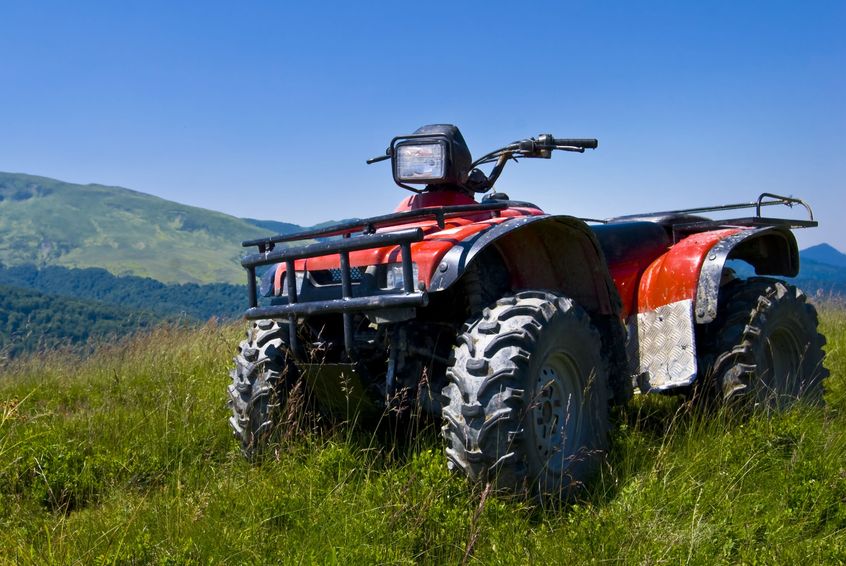Operating an ATV is definitely a big responsibility and can be an intimidating process for the rookie driver. We all want to believe that we are natural at teaching others how to drive; the fact is there are many nuances involved that can either attribute to a great day on the trails or a bad trip to the emergency room.
When you purchase an ATV, the best way to start is by taking an ATV safety course. They cover all the bases from reading and respecting the terrain to how to properly handle your machine.
Generally included when you purchase a new ATV is access to this free course and it is strongly advised that you make use of it. Here are a few tips and suggestions that good practice for all skill levels. However, in no way do they replace the knowledge a rider receives by taking a course provided by an ATV Safety Institute (ASI).
Remember that no two ATV’s are the same. From the starting procedure to the way it sounds, each one is its own unique vehicle. Familiarize yourself with the control layout well before you attempt to take it out for a spin – read the owner’s manual!
There are several items that should be taken very seriously before each and every ride and they should all be covered in your owner’s manual:
- Tire pressure
- Control tolerances
- Tightening specs
- Oil check
- Fuel check
- Coolant levels
- Small tool kit (Most ATV’s come with one – make sure to carry it with you)
Select a wide-open space to familiarize yourself with how your machine handles. This sounds like it would be common sense but you don’t want to find yourself falling off a cliff or attempting steep hills on your first ride. You should have plenty of room to maneuver figure eights and full turns with ease. For an ideal practice ground, try to find terrain that is hard packed with minimal elevation. Avoid paved or concrete surfaces as ATV low pressure tires are not equipped to handle these surfaces properly.
Wear a helmet. Statistically, head injuries are at the top of the list for ATV’s so to help reduce the severity of these injuries – wear a helmet. The recommended helmets are those certified by the Snell Memorial Foundation and/or US Department of Transportation (DOT). Wearing protective gear is also recommended:
- Goggles
- Gloves
- Over the ankle boots
- Long pants
- Long sleeved shirt
- Chest protector
- Neck collar
All of these help protect you against abrasions and cuts as well as other injuries you might encounter from trees, rocks and other obstacles.
Check your posture. Make sure your head is up and eyes are looking way ahead down the trail. You should have relaxed shoulders, slightly bent elbows pointing away from your body. Your knees should be squeezing the gas tank (slight pressure), and your feet should be on the pegs or foot rests with your toes pointing forward.
Get your machine to launch without spinning the wheels and bring it to a steady stop. This is probably the best place to begin. Since ATV transmissions vary from fully manual to fully automatic, you should practice getting your machine to move forward and come to a stop as smoothly as possible before you attempt any trails.
Unlike an automobile, most ATV’s have a narrower wheelbase and you will need to adjust your body language to master a corner. Here are a few tips for proper turning:
- Prior to entering the apex of the turn, move your body weight forward and to the inside of the turn.
- While turning your head in the direction of the turn, turn the handlebars.
- An ATV has a natural tendency to tip outward so provide counterweight by leaning to the inside.
- If you feel that you are losing control, reduce the throttle gradually and make a wider turn.
Now that you’ve learned how to start and stop with confidence and you’ve mastered cornering, you might be ready to transitions to trails. Even though the basic principles apply here, there are new conditions that enter the equation that will demand even more specific skills.
For additional tips and techniques, check out the ATV Safety Institute archive.
Follow Us: Facebook – Foursquare – Twitter – YouTube – LinkedIn

